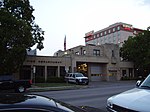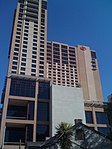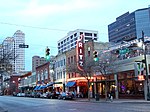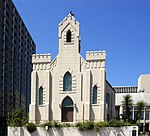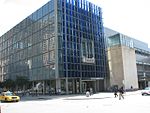William Sidney Porter House
AC with 0 elementsBiographical museums in TexasCity of Austin Historic LandmarksHistoric house museums in TexasHouses completed in 1886 ... and 7 more
Houses in Austin, TexasHouses on the National Register of Historic Places in TexasLiterary museums in the United StatesMuseums in Austin, TexasNational Register of Historic Places in Austin, TexasO. HenryRelocated buildings and structures in Texas

The William Sydney Porter House or O. Henry House is a historic structure in Downtown Austin, Texas. William Sydney Porter, better known as the author O. Henry, lived there between 1893 and 1895. The Porter house was added to the National Register of Historic Places on June 18, 1973. The house is known today as the O. Henry Museum. The collection is curated by Melissa Parr, Site Coordinator.
Excerpt from the Wikipedia article William Sidney Porter House (License: CC BY-SA 3.0, Authors, Images).William Sidney Porter House
East 5th Street, Austin
Geographical coordinates (GPS) Address External links Nearby Places Show on map
Geographical coordinates (GPS)
| Latitude | Longitude |
|---|---|
| N 30.265694444444 ° | E -97.739111111111 ° |
Address
O. Henry Museum
East 5th Street 409
78701 Austin
Texas, United States
Open on Google Maps
